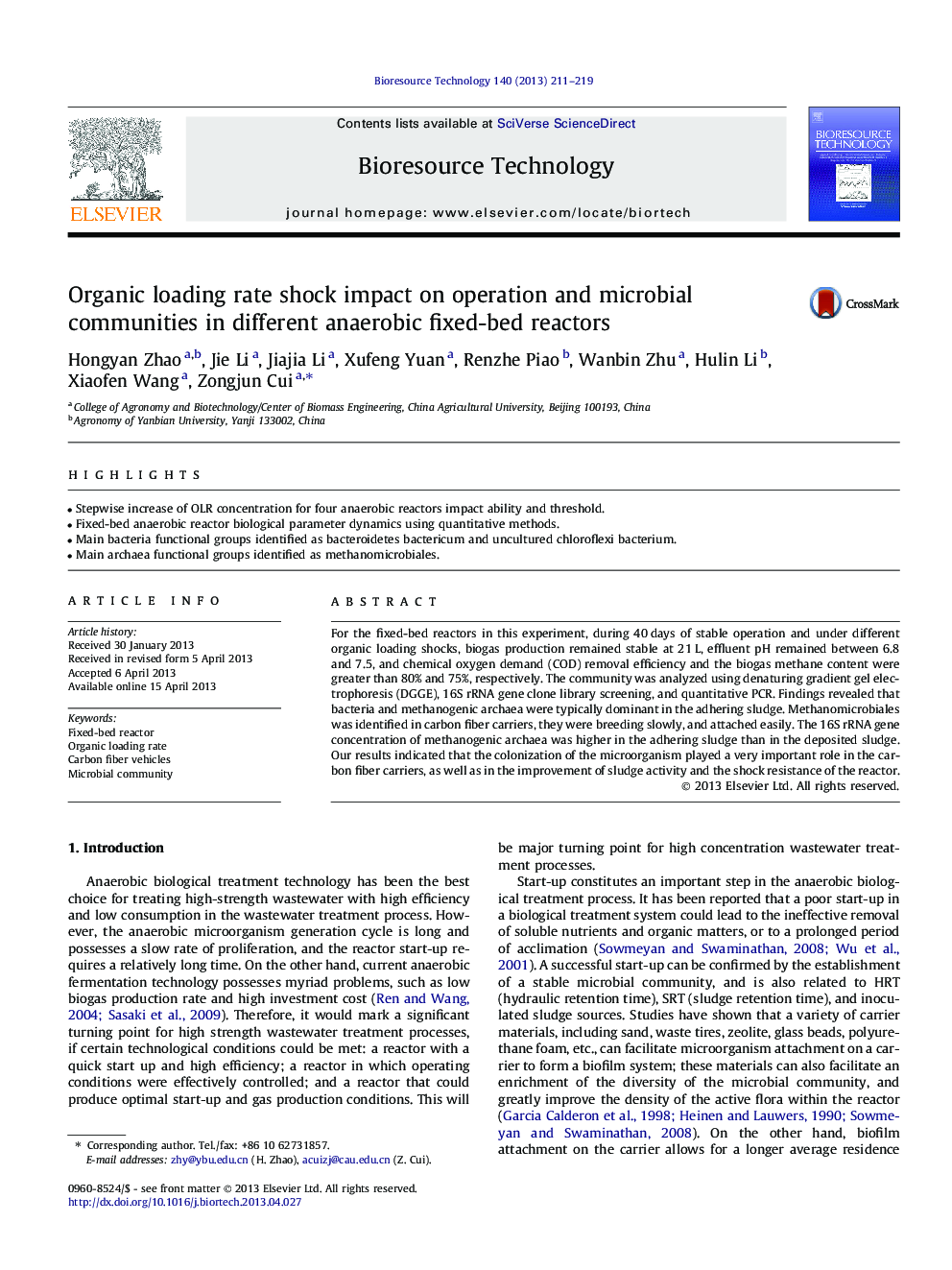| Article ID | Journal | Published Year | Pages | File Type |
|---|---|---|---|---|
| 7081988 | Bioresource Technology | 2013 | 9 Pages |
Abstract
For the fixed-bed reactors in this experiment, during 40Â days of stable operation and under different organic loading shocks, biogas production remained stable at 21Â L, effluent pH remained between 6.8 and 7.5, and chemical oxygen demand (COD) removal efficiency and the biogas methane content were greater than 80% and 75%, respectively. The community was analyzed using denaturing gradient gel electrophoresis (DGGE), 16S rRNA gene clone library screening, and quantitative PCR. Findings revealed that bacteria and methanogenic archaea were typically dominant in the adhering sludge. Methanomicrobiales was identified in carbon fiber carriers, they were breeding slowly, and attached easily. The 16S rRNA gene concentration of methanogenic archaea was higher in the adhering sludge than in the deposited sludge. Our results indicated that the colonization of the microorganism played a very important role in the carbon fiber carriers, as well as in the improvement of sludge activity and the shock resistance of the reactor.
Related Topics
Physical Sciences and Engineering
Chemical Engineering
Process Chemistry and Technology
Authors
Hongyan Zhao, Jie Li, Jiajia Li, Xufeng Yuan, Renzhe Piao, Wanbin Zhu, Hulin Li, Xiaofen Wang, Zongjun Cui,
